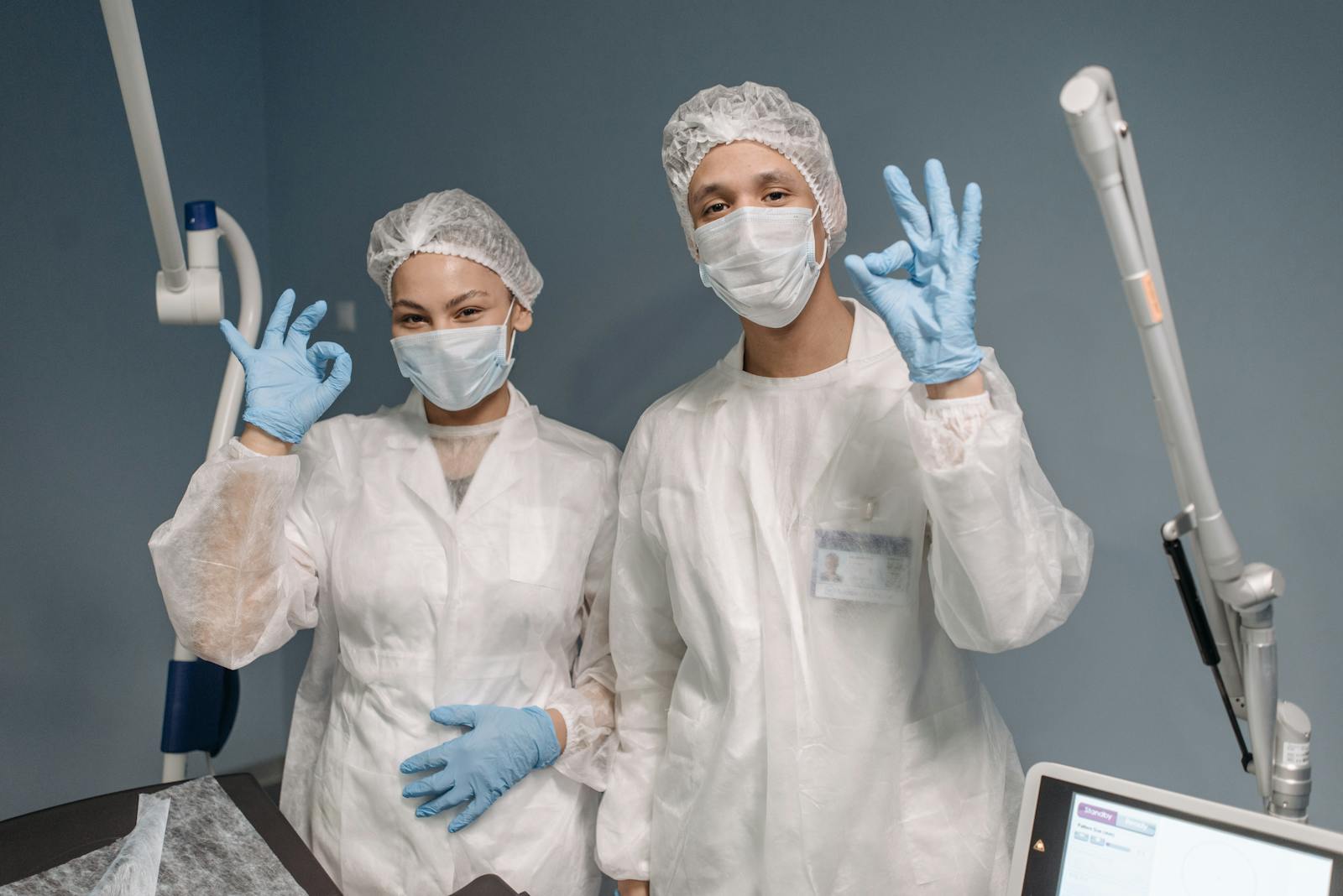As we delve into the intricacies of lumbar laminectomy surgery, it is crucial to ponder both the technical aspects of the procedure and the profound impact it has on patient mobility and quality of life. This surgical intervention, while common, still raises questions about its suitability for varying degrees of spinal disorders, the efficacy of new minimally invasive techniques, and the long-term outlook for patients post-surgery. Join us as we unravel these complexities, offering insight that may provide clarity for those contemplating their surgical options.
Understanding Lumbar Laminectomy Surgery
Lumbar laminectomy surgery, also known as decompression surgery, is a vital surgical procedure that involves the removal of the lamina – the back part of the vertebra that covers your spinal canal – to alleviate pressure on the spinal cord or nerves. This critical operation is typically necessitated by conditions such as lumbar spinal stenosis, herniated discs, or spinal tumors, which can cause debilitating pain, numbness, and mobility issues.
Surgery costs are an unavoidable aspect of lumbar laminectomy, with prices varying greatly based on factors such as geographical location, hospital, surgeon expertise, and the patient’s overall health. Despite the potential expense, the relief from chronic pain and improved quality of life can make the procedure a worthwhile investment for many patients.
Medical advances have considerably enhanced the efficacy and safety of lumbar laminectomy surgery. Innovations such as minimally invasive techniques, enhanced imaging technology, and improved post-operative care have reduced surgical risks, minimized recovery time, and increased the overall success rate of the procedure. However, like all surgical interventions, lumbar laminectomy still carries inherent risks, and patients should thoroughly discuss these with their healthcare provider before making a decision.
The Anatomy of the Lumbar Spine
Delving into the intricate structure of the lumbar spine, it is comprised of five interconnected vertebrae labeled L1 to L5, which serve as the main support for the entire upper body and house essential elements of the nervous system. These vertebrae, fundamental to the Spinal Structure Basics, are the largest and bear the most weight, explaining their unique, robust structure.
Each vertebra consists of a strong, round bone called the vertebral body, which is linked by two pedicles to the posterior arch, forming the vertebral foramen, a canal through which the spinal cord passes. The intervertebral discs, located between each vertebra, act as shock absorbers, preventing damage from the forces of daily activities.
The Lumbar Region Functions extend beyond mechanical support. The lumbar spine also houses the cauda equina, a bundle of spinal nerves that control and provide sensation to the lower limbs and pelvic organs. Additionally, the lumbar vertebrae are key to many movements, including flexion, extension, and rotation of the torso.
Appreciating this complex anatomy is essential in understanding the impact of conditions affecting the lumbar spine, and subsequently, the need for procedures like lumbar laminectomy. Understanding the lumbar spine’s anatomy allows for a holistic view of the spinal health and potential surgical interventions.
Conditions Necessitating Lumbar Laminectomy
There are several spinal conditions that may necessitate a lumbar laminectomy, a surgical procedure that involves the removal of the back part of a vertebra to create more space within the spinal canal. These conditions often involve a significant impairment or compression of the spinal nerves, leading to severe pain and, in some cases, motor function deficiencies. A careful evaluation of these conditions is essential to determine the necessity and potential effectiveness of a lumbar laminectomy as a treatment option.
Identifying Lumbar Spine Disorders
Understanding spine disorders that necessitate a lumbar laminectomy requires a thorough knowledge of the lumbar spine’s structure and the various conditions that can compromise its function. Spine disorder symptoms commonly include persistent lower back pain, numbness or weakness in the legs, and difficulty with walking or standing. These symptoms may indicate conditions like spinal stenosis, herniated discs, or spondylolisthesis, each capable of causing significant spinal compression. While non-surgical treatments such as physical therapy, medication, or spinal injections can sometimes alleviate these symptoms, their effectiveness varies depending on the severity and nature of the underlying disorder. Identifying lumbar spine disorders correctly and promptly is essential in determining the most appropriate treatment method and preventing further deterioration of the patient’s quality of life.
Necessity of Surgical Intervention
When conservative treatments fail to provide relief or when the patient’s condition worsens, surgical intervention becomes necessary, which may involve procedures like lumbar laminectomy. This is especially true in cases of severe spinal stenosis, herniated discs, or spondylolisthesis that greatly impair mobility and quality of life. The decision to proceed to surgery is typically made after careful assessment of the patient’s overall health, the severity of their symptoms, and the expected outcomes of surgical alternatives. It is also important to take into account insurance coverage, as this can greatly impact the feasibility of different treatment options. Lumbar laminectomy, while invasive, often offers the greatest chance for pain relief and improvement in function, especially when simpler, less invasive procedures have been unsuccessful.
Pre-operative Assessment and Preparation
Before undergoing lumbar laminectomy surgery, a thorough pre-operative assessment is essential to evaluate the patient’s health status and guarantee ideal preparation for the procedure. This evaluation involves a detailed medical history review, diagnostic imaging studies, and physical examination to identify any potential risks or contraindications to surgery.
Patient education is an important component of this pre-operative phase. It is aimed at ensuring the patient fully understands the nature of the procedure, its risks and benefits, and the expected recovery timeline. This information helps to alleviate potential anxieties and promotes informed decision-making.
The choice of anesthesia is another critical aspect of pre-operative planning. The anesthesiologist will discuss suitable options with the patient, taking into account their overall health, the complexity of the surgical procedure, and patient preference. General anesthesia is often used for lumbar laminectomy surgery, although spinal anesthesia may also be an option in certain cases.
Lastly, any underlying medical conditions, such as diabetes or hypertension, should be optimally managed prior to surgery. A tailored plan, including adjustments to current medications and the introduction of pre-operative exercises, if necessary, are also established during this phase. All these steps ensure a safer surgical experience and promote optimal post-operative recovery.

Step-by-step Procedure of Lumbar Laminectomy
Delving directly into the specifics of the lumbar laminectomy procedure, the initial step typically involves the administration of general or spinal anesthesia to ensure patient comfort throughout the surgical process. Once the anesthesia takes effect, patient positioning techniques are applied to effectively expose the surgical area. The patient is usually placed in a prone position, often with the abdomen free to prevent pressure on the belly.
The surgeon then makes an incision over the affected lumbar area. Surgical instruments used at this stage include a scalpel for the incision, followed by a series of dilators and retractors to expose the lamina. With the use of a high-speed drill and Kerrison rongeurs, the lamina is carefully removed to relieve pressure on the nerve roots.
The procedure is performed under continuous visual guidance using a microscope or loupes to avoid nerve injury. Once the nerve roots are adequately decompressed, the surgical instruments are removed, the wound is irrigated and a drain may be placed. The incision is then closed using sutures or surgical staples. This meticulous procedure aims to alleviate the symptoms of lumbar spinal stenosis, improving the patient’s quality of life.
Post-operative Care and Recovery
Following a lumbar laminectomy, diligent post-operative care and a carefully planned recovery regimen are crucial to guarantee excellent surgical outcomes. This phase of the process includes critical aspects like pain management strategies and the incorporation of a targeted physical therapy program. Over the next sections, we will explore these aspects in detail, discussing effective ways to manage post-operative discomfort and the role of physical therapy in regaining strength and mobility.
Managing Pain Post-surgery
Effective management of post-operative pain is an essential aspect of recovery after a lumbar laminectomy surgery. Pain medication options and coping strategies are important to guarantee a smooth and comfortable recovery process.
Key points include:
- Pain medication options: Your physician may prescribe medications such as non-steroidal anti-inflammatory drugs (NSAIDs), opioids, or muscle relaxants. These medications can help manage pain and inflammation, but it’s important to use them as directed to avoid potential side effects and addiction.
- Coping strategies: Techniques like deep breathing exercises, visualization, and progressive muscle relaxation can complement medication in managing pain.
- Regular follow-ups: Regular check-ups with your surgeon or doctor are essential to monitor your recovery and adjust pain management strategies as necessary. These visits also provide an opportunity to discuss any concerns or side effects.
Physical Therapy Regimen
Implementing a thorough physical therapy regimen is an essential element of post-operative care and recovery following a lumbar laminectomy surgery. This process typically involves the use of specialized therapy equipment and a series of rehabilitation exercises designed to restore strength and flexibility to the spinal region. Immediately after the surgery, gentle movements may be initiated to prevent stiffness and promote blood circulation. As healing progresses, patients will gradually shift into more intensive exercises under the guidance of a skilled physical therapist. This may include balance training, hydrotherapy, and targeted muscle work. The ultimate goal is to improve the patient’s mobility, reduce pain, and achieve peak functionality. Consistent adherence to the prescribed physical therapy regimen is vital for a successful recovery.
Potential Complications and Risks
Despite the high success rates of lumbar laminectomy surgery, it is important to contemplate the potential complications and risks associated with the procedure.
First, one must consider the risk of infection. As with any surgical procedure, there is a chance that the surgical site may become infected. This risk can be minimized with proper wound care post-surgery and the use of prophylactic antibiotics, however, it remains an important concern.
Second, complications related to anesthesia should be taken into account. These can range from minor issues such as nausea and vomiting to more severe complications like allergic reactions or respiratory difficulties.
Lastly, there can be potential neurological damage. Although rare, there is a risk of nerve injury during the surgery which can result in weakness, numbness or even paralysis.
In summary, the potential complications and risks of lumbar laminectomy include: – Infection risks – Anesthesia complications – Neurological damage
Informed consent should involve a thorough discussion of these potential complications and risks between the surgeon and patient. It’s noteworthy to mention that while these risks exist, they are relatively rare and the surgery has high success rates.

Expected Outcomes and Prognosis
The anticipated outcomes and prognosis of a lumbar laminectomy surgery are critical considerations for both the patient and the surgeon. This next section will address the post-surgery recovery timeline, providing a detailed overview of the healing process and what patients can expect during this period. We will also assess the metrics for evaluating a successful prognosis, offering insights into key indicators of surgical success.
Post-Surgery Recovery Timeline
After undergoing lumbar laminectomy surgery, patients typically begin a recovery journey that varies in length and progression, depending on individual circumstances and overall health. This road to recovery can be broken down into several key stages. These stages include not only physical healing, but also important dietary adjustments and the need for emotional support.
To ensure a smooth recovery, patients should consider the following:
- Implementing dietary adjustments: A balanced diet rich in protein, vitamins, and minerals can expedite healing and boost energy levels.
- Seeking emotional support: This can come from friends, family, or professional therapists. It helps in managing stress and anxiety which can potentially slow down recovery.
- Regular follow-ups with the healthcare provider: This allows for timely identification of any potential issues, adjustments in treatment plans, and evaluation of recovery progress.
Evaluating Successful Prognosis
Understanding the domain of prognosis, it becomes essential to comprehend the anticipated outcomes and potential complications following a lumbar laminectomy surgery. Prognosis factors can greatly influence the surgery aftermath and the patient’s quality of life post-operation. The primary objectives of this surgical intervention are to alleviate pain, restore mobility, and enhance the patient’s overall well-being. Success is typically evaluated through improved symptoms, reduced reliance on pain medication, and the patient’s ability to return to daily activities. Nevertheless, the prognosis is multi-factorial, with patient-specific factors such as age, overall health, severity of symptoms, and the presence of other medical conditions playing a significant role. Hence, while the outcome can be largely positive, it is crucial to individualize prognosis evaluation for each patient.
Frequently Asked Questions About Lumbar Laminectomy
In this section, we will address some common queries related to lumbar laminectomy, providing detailed and precise answers to enhance your understanding of this surgical procedure.
One of the most frequent questions asked is about the insurance coverage and surgical costs. A lumbar laminectomy surgery cost varies, depending on factors such as the surgeon’s experience, geographical location, and the complexity of the procedure. Generally, most insurance providers cover a significant portion of the cost, however, it’s advisable to discuss this with your insurance provider to understand the specifics of your policy coverage.
Here are the answers to some other commonly asked questions:
- What is the recovery time after the surgery? The recovery period can vary from person to person, but generally, patients can return to light activities within a few weeks post-surgery.
- What are the risks associated with this procedure? As with any surgical procedure, lumbar laminectomy carries risks such as infection, nerve damage, and spinal fluid leakage. Your surgeon will discuss these risks with you prior to the procedure.
- Can lumbar laminectomy prevent future back problems? While the procedure can alleviate current symptoms, it does not prevent the possibility of future back problems. Regular follow-ups and preventive care are essential.
Real-life Stories and Experiences
Having addressed the most common inquiries, we now turn our focus to sharing firsthand accounts and testimonials from individuals who have undergone lumbar laminectomy surgery.
Sandra, a 57-year-old retired teacher from New York, described her experience as transformative. She had been living with severe lower back pain for several years before deciding on surgery. Despite experiencing initial anxiety, she found emotional coping strategies, like mindfulness and cognitive-behavioral therapy, immensely helpful in managing her fears. Post-surgery, she reported significant pain relief and improved mobility, making her daily activities more manageable.
Another patient, Mark, a 45-year-old software engineer from California, outlined the importance of patient support in his recovery journey. His family’s active involvement in his care, together with a structured rehabilitation program, propelled his recovery. In his words, “the surgery was only half the battle; the real victory was the support I received afterwards.”
These testimonials highlight the physical relief and emotional coping strategies that are often part and parcel of the lumbar laminectomy process. They underscore the significance of patient support in the journey towards recovery, emphasizing that the success of lumbar laminectomy surgery extends beyond the operating room.
Alternatives to Lumbar Laminectomy Surgery
While lumbar laminectomy surgery has proven effective for many patients, it’s important to explore the array of alternative treatments that can offer pain relief and improved mobility without the need for surgical intervention. Non-surgical treatments and alternative therapies are increasingly being examined and utilized as potential alternatives to surgery.
Some of the most common alternative treatments include:
- Physical therapy: A structured and personalized program can help strengthen the muscles that support the back, improve flexibility, and promote excellent functioning, potentially reducing the need for surgery.
- Medication management: Nonsteroidal anti-inflammatory drugs, nerve pain medications, and muscle relaxants can be used to manage pain and inflammation.
- Injections: Epidural steroid injections can help reduce inflammation and pain in the affected area, providing temporary relief and possibly preventing the need for surgery.
These alternative therapies have been successful for many patients, allowing them to regain control of their health without resorting to invasive procedures. However, it’s critical for patients to work closely with their healthcare provider to identify the best treatment approach based on their unique situation. Such an approach promotes a patient-centered and holistic model of care, aimed at maximizing patient outcomes and improving quality of life.
Frequently Asked Questions
What Kind of Anesthesia Is Used in Lumbar Laminectomy Surgery?
In most surgical procedures, including this one, general anesthesia is primarily employed to guarantee patient comfort and safety. Anesthesia complications can occur, however, recovery timeline largely depends on individual health conditions and post-operative care.
Can Lumbar Laminectomy Surgery Affect Sexual Function?
Any surgical procedure, including those on the lower spine, may potentially affect sexual function due to physical discomfort, emotional impact, or changes in self-perception. It’s important to discuss post-surgery intimacy concerns with your healthcare provider.
Are There Dietary Restrictions Before or After Lumbar Laminectomy Surgery?
Regarding dietary restrictions, pre-surgery nutrition is vital for excellent recovery. Post-operative hydration is also essential. Specific guidelines may vary, so it’s best to consult with your healthcare provider for personalized advice and directions.
What Types of Exercises or Physical Therapy Are Recommended After Lumbar Laminectomy?
Post-operative exercises often include posture correction techniques and gentle stretches. Physical therapy, tailored according to the patient’s recovery timeline, may encompass strengthening exercises to improve mobility and reduce the risk of future spinal issues.
Is Lumbar Laminectomy Covered by Health Insurance?
Coverage for medical procedures varies based on insurance requirements. Lumbar laminectomy, like many surgical procedures, is typically covered, but specific out-of-pocket costs depend on insurance plan details, deductibles, and co-payments. Consult your provider for exact coverage information.

